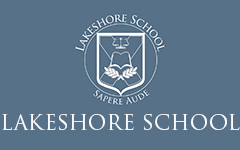Hot water from a kettle heats up the air inside a plastic bottle, and adds water vapour into the air. When you seal the bottle and put it in ice water, the water vapour condenses and the air cools down, creating a smal vaccuum inside the bottle. Here, the bottle is being sucked in by the vaccuum.
Vinegar reacts with the calcium carbonate in an egg’s shell to create little bubbles of carbon dioxide as it dissolves the shell. After 24 hours of soaking in vinegar, a raw egg’s shell is fully dissolved and it feels soft when you touch it. The egg’s membrane is surprisingly strong!
Vinegar also has a chemical reaction with baking soda (sodium bicarbonate) and reacts very strongly by making lots of fizzy bubbles containing carbon dioxide. We performed several experiments with carbon dioxide gas (CO2) such as extinguishing a candle and blowing up balloons.
We also used pH strips and Red Cabbage Indicator to investigate kitchen chemicals and classify them as Acids or Bases. We learned that acids and bases react with each other and some can make very poisonous gases!
The next few sessions of Level Up: Junior Science will investigate things that float, and how ships sink!





